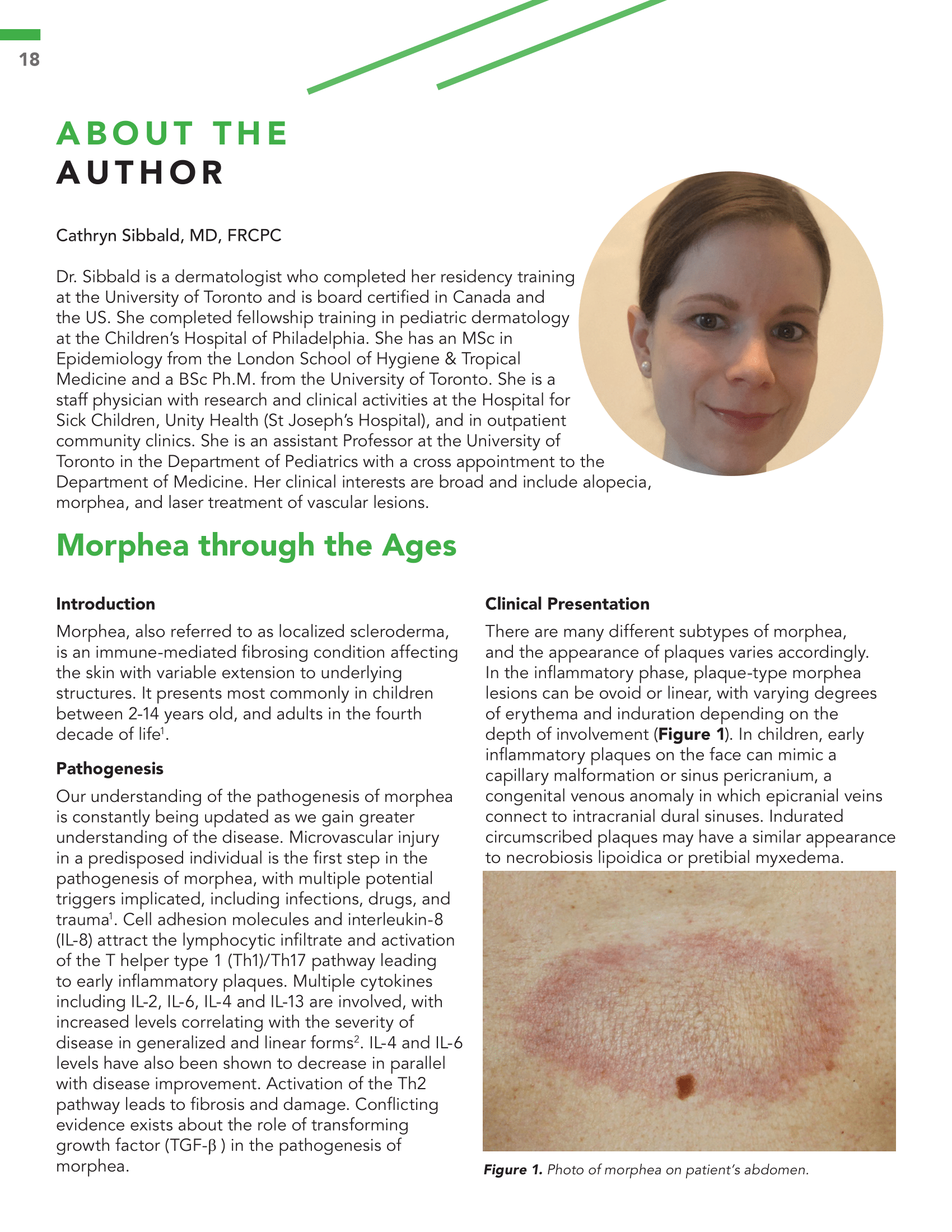Morphea through the ages
Abstract
Morphea, also referred to as localized scleroderma, is an immune-mediated fibrosing condition affecting the skin with variable extension to underlying structures. It presents most commonly in children between 2-14 years old, and adults in the fourth decade of life.
References
Visscher MO, Bailey JK, Hom DB. Scar treatment variations by skin type. Facial Plast Surg Clin North Am. 2014; 22(3):453-462.
Stasko T, Complications of cutaneous procedures. Roenigk RK, Roenigk HHJ. Dermatologic Surgery Principles and Practice 2nd ed Marcel Dekker NY, 149-175
Robinson JK. Segmental reconstruction of the face. Dermatol Surg. 2004; 30(1): 67-74.
Miller CJ, Antunes MB, Sobanko JF. Surgical technique for optimal outcomes: Part I. Cutting tissue: Incising, excising, and undermining, J Am Acad Dermatol. 2015; 72(3): 377-387.
Nantel-Battista M, Murray C. Dermatologic Surgery Pearls: Enhancing the efficacy of the traditional elliptical excision, J Cutan Med Surg. 2015; 19(3): 287-90.
Miller CJ, Antunes, Antunes MB, Sobanko JF. Surgical technique for optimal outcomes: Part II. Repairing tissue: Suturing, J Am Acad Dermatol. 2015; 72(3):389-402.
Shin TM, Bordeaux JS. How suture technique affects the cosmetic outcome of cutaneous repairs, J Drugs Dermatol. 2014; 13(8):967-969.
Kraft J, Murray CA. The fusiform skin excision: one recipe for success, J Cutan Med Surg. 2011, 15(5): 245-249.
Beidas OE, Gusenoff JA. Deep and superficial closure. Aesth Surg J, 2019; 39(2): 67-72.
Richer V. Scar injection: beyond triamcinolone acetonide. Can Derm Today. 2021; 2(3): 8-10.
Zhou LL, Richer V. Treating keloids with intralesional 5-fluorouracil and triamcinolone acetonide: Aren’t we there yet? J Cutan Med Surg. 2020; 24(2):205-206.
Qiao Z, Yang H, Jin L, Li S, Wang X. The efficacy and safety of botulinum toxin injections in preventing postoperative scars and improving scar quality: A systematic review and meta-analysis. Aesthetic Plast Surg. 2021; 459(5): 2350-2362
Sobanko JF, Alster TS. Laser treatment for improvement and minimization of facial scars, Facial Plast Surg Clin North Am. 2011; 19(3):527-542.


